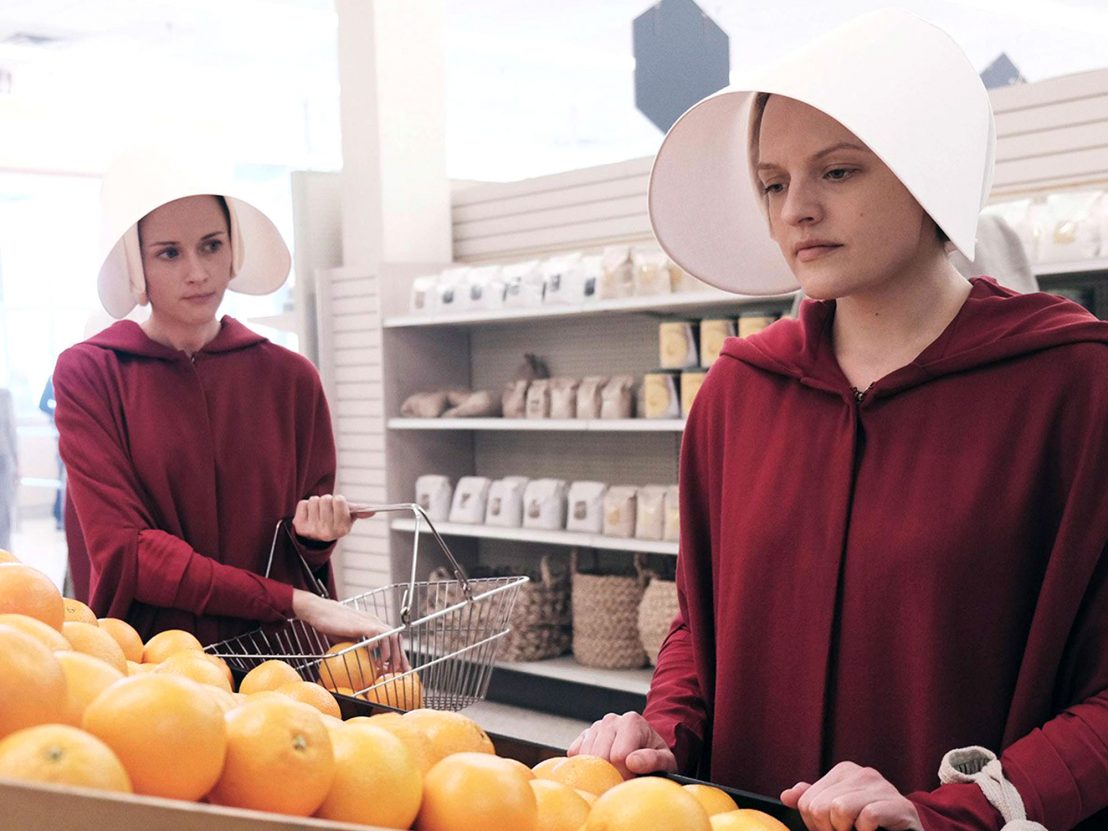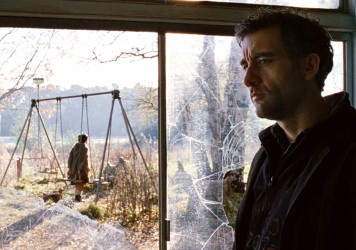
In ‘A Woman’s Place’, the sixth episode of The Handmaid’s Tale, Commander Fred Waterford proudly boasts to Mexican trade delegates about The Republic of Gilead’s new method of food production. “We’ve transitioned to a completely organic model,” he tells them as the Marthas ferry in hors d’oeuvres on silver platters.
It’s not a brag you’d immediately associate with an autocratic regime intent on the violent subjugation of women, but it’s an environmental reality the Republic must contend with. Gilead’s abusive treatment of its women is rightly centre stage in The Handmaid’s Tale, both an immediate and lingering horror. But environmental crisis looms just beneath these events; the catalyst for the gendered terror the show deftly and expertly explores.
Offred (Elisabeth Moss) is a Handmaid, the group of women both prized and chastised for their fertility in a society rendered infertile. Margaret Atwood’s 1985 source novel is coy on the reasons behind this catastrophic decline in birth rate but the results are plain enough. Following a theocratic coup, a group of religious insurgents established the Republic of Gilead. And in the new state, Offred, along with her fellow Handmaids, are enslaved, held captive to bear children and forced to take on their master’s name as a mark of their sacred position. It is a deliberate, chilling stripping of agency. In a flashback to before the coup we see Offred – then called June – rushed to hospital in labour; lining the streets are hundreds of desperate men and women, there to witness the potential birth.
There are allusions, though, to the origins of the fertility crisis. The colonies – toxic wastelands at the edge of Gilead – are referenced throughout, framed as a fate worse than death for the “unwomen” sent there. They’re either worked to death or die swiftly from the pollution and radioactive waste. We never see the colonies but we can imagine, like those threatened with deportation, the atrocities that await. From the Mexican envoy, we hear of weather patterns disrupting staple crop cycles. And Serena Joy, Commander Waterford’s wife, tells us how Gilead cut its carbon emissions by 78 per cent in three years.
Obvious parallels persist between the world of The Handmaid’s Tale and our own. Atwood has long been an environmental activist, and as a member of the Canadian Green party and joint honourary president of the Rare Bird Club, she is well placed to elucidate on the destructive potential of environmental irresponsibility.
The radioactive wilds of the colonies are hewn from the nuclear anxieties prevalent in the second half of the 20th century. The Three Mile Island accident in 1979 was the worst nuclear disaster in US history, an event that forced the evacuation of the local area and a clean up operation lasting 20 years. Abnormal weather patterns are a consequence of climate change we continue to live with, their effect on food production increasingly demonstrable.
The Commander’s boast of organic produce reflects the harmful effects of pesticides – chlorpyrifos, in particular, has been shown to have a harmful effect on children. And in a recent article for the Guardian, Atwood spoke out about the corrosive effect of plastics on society and the environment, asserting that “because of oestrogen-imitating chemicals leaching from discarded plastics, the fertility of male sperm is plunging.”
Gilead’s response is the rejection of freewheeling consumerism and a return to some kind of half-remembered, mythical vision of 1950s-style domesticity. The shots of the Waterford kitchen exude a soft-focus wholesomeness, a calculated update of Cezanne’s still lifes depicting the rural idyll, albeit with the promise of rape. The supermarket scenes extend this vision. There’s none of the garishness befitting our own equivalents – instead, Gilead has replaced corporate contempt for food with a cool respect. The vegetables are large and imperfect – plump – and the meat is wrapped beautifully in paper. There’s no place for plastic in its shopping aisles. Blessed be the fruit, indeed.
But Gilead’s policy of responsible environmental regeneration is carried out to serve its primary crisis: the infertility epidemic. And it does so through the violent subjugation of the Handmaids, its only fertile inhabitants. The totalitarianism on show is no different to that of our own world – the swift monopolisation of its most valuable assets, the fertile. With that, the regime executes a shrewd and necessary co-opting of environmental issues, an acknowledgement, away from its religious babble, of the real world events that caused the crisis in the first place.
The Handmaid’s Tale, then, isn’t just about violence against women, although it is a grim unmistakeable reality. It’s also about violence against the environment and the unseen ways it affects us. Disturbingly, The Republic of Gilead understands this better than our own governments.
Published 18 Jun 2017

By Luke Walpole
Alfonso Cuarón’s film was released in 2006 and is set in 2027, so why does it feel so relevant today?

By Amy Bowker
From Mad Men to The Handmaid’s Tale, the American star never fails to impress.

By Paul Risker
How a young actress named Googie Withers stole the show in British noir Pink String and Sealing Wax.